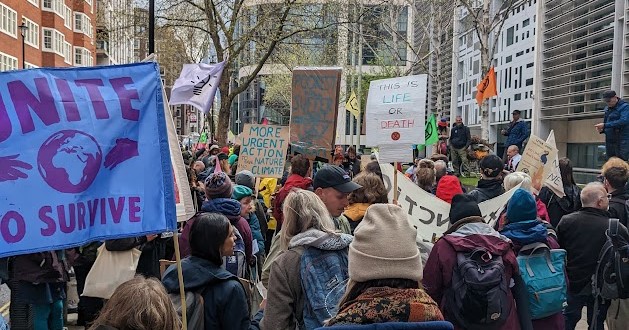COP27
COP27 finished over the weekend (COP = UN Conference of the Parties, annual convention for global leaders to meet and agree on climate things. You’ve probably heard of the Paris Accords – that was the 2015 COP where the world agreed that +2C was a very dangerous amount of warming and we should be shooting for 1.5C). This COP was in Egypt. Main results:
- We are not on track to meet 1.5 C, and the language that came out of the negotiations did not make any moves to change that or really reinvigorate the idea of keeping to 1.5.
- A “loss and damages” (reparations) fund was established for rich, high emissions countries to pay poor countries that are most vulnerable to climate impacts.
- Over 600 fossil fuel companies were present at the negotiations and lobbying.
Carbon Colonialism
Carbon Colonialism is the idea that by allowing carbon offsets to be traded globally, the rich global north is perpetuating colonialism by buying up land/rights to land in the global south for use as carbon offsets (short opinion piece here).
- Foreign carbon offsets breaks the link between local emissions and local remediation to deal with those emissions – outsourcing responsibility
- It commodifies nature or land that was previously publicly held and shared.
- Yet another example of us refusing to change our consumption and growth addiction and trying to put a bandaid on it by planting trees in someone else’s backyard.
- We already can claim to have reduced our own emissions when manufacturing is offshored – we are still driving those emissions but now they “belong” to another country. This ties in with the criticisms Net Zero. Net Zero is wonderful as long as you are following the spirit rather than the letter of it. We have to decarbonize, and offsets really only should be used for things that end up being impossible to decarbonize (e.g. potentially aviation). Using sketchy/colonialist/etc offsets and wacky schemes for capturing carbon a license to keep burning fossil fuels is technically following the idea of net zero but really isn’t how it’s supposed to work.
Positive Tipping Points
Positive Tipping Points - the nice counterpoint to the negative climate tipping points from Week 7. I think we are all intuitively familiar with the idea of a tipping point – that small nudge over the edge that starts the theoretical ball rolling down the hill from one state to a new state. This can be accomplished both by weakening the stabilizing forces that are keeping you in the current state (making the first dip more shallow in the animation) and also by increasing the amplifying forces that can propel you to the new state (deepening the second dip).

Animation credit to Dr. Chris Boulton at the University of Exeter.
Positive tipping points are utilizing this idea of self-amplifying change for good to quickly and dramatically change the world. There’s lots of examples out there of societal tipping points- the chart below shows how quickly a new technology is adopted, or big social movements like women’s suffrage. After a slow start, something changes, and it quickly becomes widespread.
Technological adoption s-curves (tipping points) from Our World in Data.
Researchers have even quantified the early warning signals for systems. You can see it in the animation above – the ball starts to move more slowly right before the tip. It’s the system losing the resiliency from the negative feedbacks that keep it in place weakening (the lag in the autocorrelation increases). This has been observed in lots of data before tipping of climate systems, electrical grids before blackouts, or market data before a bubble bursts.
How can we utilize the idea of tipping points then to get society accelerating towards sustainability? First, we can create the enabling conditions for tipping – making the solution better, more affordable, more accessible, and reduce the convenience, cheapness, and acceptance of the previous solution. Then, the tipping point comes as a critical mass of people adopt the new solution, which then sets off the reinforcing feedback of economies of scale, improving accessibility, improving integration, and normalization. (You can check out the Exeter page on tipping points applied to different area.)
Change is possible, and we shouldn’t underestimate how quickly it might come. We just had a discussion in a seminar about whether or not we thought keeping warming to 1.5C was still possible. In pessimistic (typical British) fashion, the people I was talking to thought we were likely going to head to 3C before anything really changed (current estimates for warming including all the net zero promises out there gets us to ~2.5-3.5C). But in my (typically American I was told) view, I’m optimistic things are starting to really change. Think about the change in the discourse in the US about climate now vs. 3-5 years ago – it’s completely different! Very few people are still denying it exists. It became a major topic of the 2020 presidential campaign. Companies are making net zero promises left and right. Gen Z voted +28 pts Democrat this year! It’s not enough yet, but who knows how fast things will change in the next 3-5 years?
Which brings me to you :). By talking about climate and doing whatever you’re doing, you are part of the positive tipping point. If you feel like it doesn’t matter that you walked to the store once, or voted in the local election, or brought your own coffee cup once, or whatever, because the carbon impact of that is so small, you’re right, it doesn’t really matter. But if you do it, and, paraphrasing Dr. Ayana Elizabeth Johnson again, you can make your actions ripple out to other people, and enough people do it, it does matter. It’s what I’m doing right now by sending you these emails. And if you don’t know how you can personally contribute to the climate fight, watch Ayana’s Ted Talk about the climate venn diagram.
